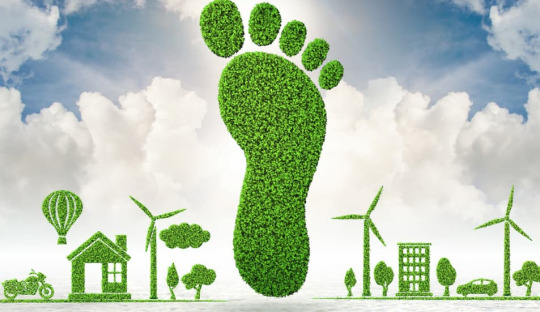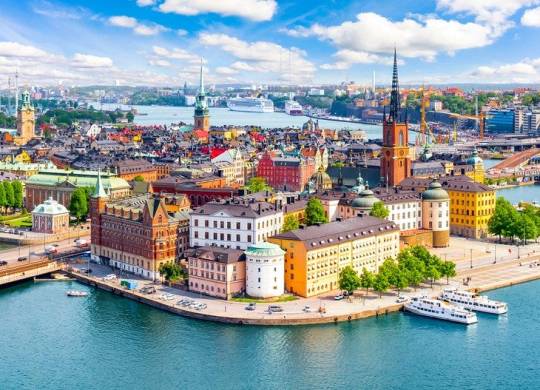#Net Zero Emissions
Text
Treasury Proposes Clean Electricity Tax Guidance
On May 29, 2024, the Internal Revenue Service (IRS) and the Treasury Department released the pre-publication version of proposed guidance to implement “technology-neutral” clean electricity tax credits, including deeming certain technologies as per se zero-emitting and outlining potential methodologies for determining how other technologies—namely those involving combustion or gasification—could…

View On WordPress
#business#clean electricity tax credits#clean energy#clean energy tax credit#emissions#government#IRS#legal#net zero emissions#Tax#tax law#Treasury Department
0 notes
Text
Seizing the $12.7 Trillion Investment Opportunity: India's Path to a Net-Zero Economy by 2050

In an era where the world grapples with the daunting challenge of climate change, India emerges as a beacon of hope, embracing an ambitious journey towards a net-zero economy by 2050. The monumental significance of this endeavor cannot be overstated, with the New Energy Outlook: India report by BloombergNEF estimating an extraordinary investment opportunity worth $12.7 trillion. This path not only underscores India's commitment to sustainability but also presents an unparalleled prospect for strategic consulting and business leaders to shape a greener, more prosperous future.
The BloombergNEF report illuminates two distinct scenarios that delineate India's energy transition trajectory, shedding light on both the obstacles and prospects that lie ahead. The Economic Transition Scenario (ETS), characterized by an economics-driven transition, strives to align with a global temperature rise of 2.6 degrees Celsius by 2050. While commendable progress is made towards energy independence and decarbonization, this path falls shy of the 2050 goals. On the other hand, the Net Zero Scenario (NZS) envisages a collaborative effort between the government and the private sector, with robust support, leading to a net-zero emissions economy by 2050. Crucially, this approach aims to achieve this without relying on unproven technologies, positioning India to attain mid-century energy independence cost-effectively.
India's dedication to clean energy is exemplified by its remarkable achievement of adding 53 gigawatts of solar and wind energy between 2018 and 2022. Notably, in 2022 alone, a staggering 16 gigawatts of utility-scale solar capacity was installed. However, despite these strides, solar and wind power collectively constitute less than a quarter of the nation's total energy generation capacity. The elephant in the room remains the continued dominance of coal, which not only hampers progress towards decarbonization but also stands as the primary contributor to India's greenhouse gas emissions.
This paradigm presents an unprecedented investment opportunity, offering a chance for businesses, investors, and strategic consultants to play a pivotal role. As India accelerates its transition to cleaner energy sources, the need for strategic guidance and innovative solutions becomes paramount. Business leaders can harness this opportunity by investing in renewable energy projects, developing sustainable technologies, and collaborating with the government to drive impactful policy changes. The transformational potential of this investment landscape cannot be overstated, as it aligns economic growth with environmental stewardship.
Strategic consulting firms find themselves uniquely positioned to shape India's energy landscape. By providing expert insights, data-driven analysis, and tailored strategies, these firms can guide both public and private sector entities towards informed decisions that expedite the energy transition. As India treads the path to a net-zero economy, strategic consultants can facilitate the alignment of short-term economic objectives with long-term sustainability goals, fostering a holistic approach to development.
In conclusion, India's resolute march towards a net-zero economy by 2050, underscored by the BloombergNEF report's findings, ushers in an unparalleled investment opportunity valued at an astonishing $12.7 trillion. The dichotomy between the Economic Transition Scenario and the Net Zero Scenario reveals the challenges and triumphs that lie ahead, with the latter offering a compelling blueprint for success. As solar and wind power gain ground but coal retains its grip, the investment potential in India's clean energy transition becomes increasingly evident.
For strategic consulting firms and business leaders, this juncture presents a clarion call to drive change, spearheading investments that bolster clean energy infrastructure, technological innovation, and policy advocacy. By seizing this historic opportunity, these stakeholders can not only contribute to India's sustainable future but also set a precedent for global endeavors in combating climate change. As India paves the way, the potential rewards for those who invest wisely and think boldly are immeasurable.
This post was originally published on: Foxnangel
#business growth#business opportunities in india#carbon emissions#Fox&Angel#FoxNAngel#Growing economy#Invest in India#investment opportunities in India#net zero emissions#strategy consulting
0 notes
Text
Progress towards renewable energy targets for 2030 (infographic)

- By Nuadox Crew -
The following infographic summarizes progress towards 20230 renewable energy targets by China, the US, EU, India as well as the UK.
> View full size image

> Full size image
Source: Selin Oğuz, Visual Capitalist
Read Also
China: Challenges towards net zero emissions goal (video)
0 notes
Text
Embracing Sustainability
A Simple 5-Step Guide to Reducing Your Carbon Footprint with WOCE
30 September, 2023
WOCE Team

Introduction:
Are you eager to make a positive impact on the environment but don't know where to start? Look no further! In this article, we will guide you through 5 easy steps to help reduce your carbon footprint and embrace a sustainable lifestyle with the World Of Circular Economy (WOCE). By implementing these straightforward changes into your daily life, you can contribute to the fight against climate change and create a greener future for all.
From simple habits like conserving energy and water to making sustainable choices in transportation and waste management, every action has the potential to make a big difference. We will provide you with practical tips and tricks that are both effective and realistic to incorporate into your lifestyle. Whether you are a seasoned environmentalist or just getting started on your sustainability journey, these steps are designed to be accessible to everyone.
By following these 5 easy steps to reduce your carbon footprint, you will not only be making a positive impact on the planet but also inspiring those around you to do the same. Small changes can lead to significant results, and together we can create a greener and more sustainable world for generations to come. So, let's get started on this transformative journey today.

To embark on the journey of reducing your carbon footprint, it's essential to understand what carbon footprint means. Your carbon footprint refers to the total greenhouse gas emissions caused directly or indirectly by your activities. These emissions contribute to climate change, leading to rising temperatures, extreme weather events, and other environmental challenges.
The primary contributor to carbon footprint is the burning of fossil fuels, such as coal, oil, and gas, for energy production and transportation. Other activities like deforestation, industrial processes, and waste disposal also play a significant role. By reducing your carbon footprint, you can minimize your impact on the environment and help mitigate the effects of climate change.
Reducing your carbon footprint is important not only for the health of the planet but also for future generations. With each passing year, the consequences of climate change become more apparent, and urgent action is needed to prevent irreversible damage. By taking steps to reduce your carbon footprint, you are taking a stand for a sustainable and livable future.
The impact of carbon emissions on the environment
Carbon emissions have a profound impact on the environment, contributing to global warming, air pollution, and the depletion of natural resources. The excessive release of greenhouse gases, such as carbon dioxide (CO2), methane (CH4), and nitrous oxide (N2O), traps heat in the atmosphere, leading to the greenhouse effect.
Global warming caused by carbon emissions has resulted in rising sea levels, melting glaciers, and more frequent and severe weather events. Extreme temperatures and altered weather patterns disrupt ecosystems, leading to the loss of biodiversity and the destruction of habitats. Additionally, carbon emissions contribute to air pollution, which has detrimental effects on human health, causing respiratory problems, cardiovascular diseases, and even premature death.
It's clear that carbon emissions pose a significant threat to the planet and its inhabitants. By reducing our carbon footprint, we can help mitigate these harmful effects and create a more sustainable future.
Step 1: Energy Conservation
One of the most effective ways to reduce your carbon footprint is by conserving energy. Start by making simple changes to your daily habits, such as turning off lights and appliances when not in use. Unplug electronics that are not being used, as they continue to draw power even in standby mode. Opt for energy-efficient appliances and light bulbs, which consume less electricity.
Consider implementing more significant changes, like installing solar panels on your roof to generate renewable energy. Solar panels harness the power of the sun, reducing your reliance on fossil fuels and decreasing your carbon emissions. Additionally, insulating your home and using programmable thermostats can help regulate temperature and reduce energy consumption. One of the most effective ways to reduce your carbon footprint is by conserving energy. WOCE offers tips and solutions to help you make your home more energy-efficient, from simple changes in daily habits to installing solar panels.
Step 2: Sustainable Transportation
Transportation is a significant contributor to carbon emissions, but there are several ways to make your travel more sustainable. Whenever possible, choose public transportation, carpooling, or biking instead of driving alone. These options reduce the number of vehicles on the road, decreasing overall emissions.
If owning a car is necessary, consider investing in an electric or hybrid vehicle. These vehicles produce fewer emissions and are more fuel-efficient than traditional gasoline-powered cars. Additionally, maintaining your vehicle by regularly servicing it and keeping tires properly inflated can improve fuel efficiency and reduce emissions.
Step 3: Waste Reduction and Recycling
Proper waste management is crucial for reducing your carbon footprint. Start by minimizing waste generation through conscious consumption and avoiding single-use items. Opt for reusable products like water bottles, shopping bags, and coffee cups. When shopping, buy products with minimal packaging or choose items made from recycled materials.
Recycling is another essential aspect of waste management. Learn about your local recycling guidelines and make sure to separate recyclables from general waste. By recycling materials like paper, plastic, glass, and metal, you can conserve resources and reduce the energy required for manufacturing new products. WOCE can guide you in minimizing waste generation, recycling effectively, and reducing your environmental impact.
Step 4: Sustainable Food Choices
The food we eat also has a significant impact on our carbon footprint. Opt for locally sourced, organic, and seasonal produce whenever possible. Locally sourced food reduces transportation emissions, while organic farming practices minimize the use of synthetic fertilizers and pesticides, reducing environmental pollution.
Additionally, reducing meat consumption and incorporating more plant-based meals into your diet can have a substantial impact. Livestock production is a significant source of methane emissions, a potent greenhouse gas. By choosing plant-based alternatives and reducing meat consumption, you can lower your carbon footprint and improve your health.
Step 5: Green Household Practices
Incorporating green practices into your household routine can significantly reduce your carbon footprint. Start by reducing water consumption through simple actions like taking shorter showers, fixing leaky faucets, and collecting rainwater for outdoor use. Install water-saving devices like low-flow showerheads and toilets to further conserve water.
When it comes to cleaning products, opt for eco-friendly and non-toxic alternatives. Harsh chemicals in conventional cleaners contribute to air and water pollution. Look for products labelled as environmentally friendly or make your own cleaning solutions using natural ingredients like vinegar and baking soda.
Another way to reduce your carbon footprint is by maintaining a green garden. Grow your own fruits, vegetables, and herbs, using organic gardening practices. This reduces the need for transportation and packaging associated with store-bought produce and promotes biodiversity in your backyard.
By implementing these 5 easy steps to reduce your carbon footprint, you can make a significant impact on the environment. From conserving energy and choosing sustainable transportation to reducing waste and making eco-friendly food choices, every action counts. It's essential to remember that small changes can lead to significant results when it comes to sustainability.
Start by incorporating one step at a time into your daily life, and gradually build upon your efforts. Encourage your friends, family, and community to join you on this transformative journey. Together, we can create a greener and more sustainable world for future generations. So, let's take action today and make a big difference in reducing our carbon footprint.
Conclusion: Taking Action and Making a Difference with WOCE Creating a green household and reducing your carbon footprint is easier than you think, especially with the guidance and resources provided by the World Of Circular Economy. By adopting sustainable practices and making eco-conscious choices, you can significantly reduce your carbon footprint, create a healthier living environment, and contribute to a more sustainable future.
By following these 5 easy steps to reduce your carbon footprint with WOCE, you will not only be making a positive impact on the planet but also inspiring those around you to do the same. Small changes can lead to significant results, and together, with the World Of Circular Economy, we can create a greener and more sustainable world for generations to come. So, let's get started on this transformative journey today.
#carbon footprint#net zero emissions#co2 emissions#carbon credit price today in india#sustainability#greenliving
0 notes
Photo

2023 Summer Heatwaves – Insights on Heat Stress in a Changing Climate: RMS
Executive summary: Climate change, caused by human activity, is already leading to an increase in the frequency and severity of hot extremes, including heatwaves. While it is difficult to ascribe any given event to climate change, Moody’s RMS says, extreme …
https://www.insurancejournal.com/news/international/2023/08/15/735200.htm
#International & Reinsurance News#Climate Change#extreme heat#extreme weather#global warming#heatwave#Moody's Analytics#Moody’s RMS#net zero emissions#Research and Trends#RMS#Admin#News Archives - Insurance Journal
0 notes
Text
Use of ESG Investing
By considering ESG(Environmental, Social, and Governance) factors alongside financial metrics, investors can gain deeper insights into a company's long-term value, risk management practices. ESG investing can be used to construct investment portfolios that align with an investor's values and sustainability objectives.

#Carbon Removal#Nature Based Solution (NBS)#Carbon Credit#Net Zero#Agro Forestry#Carbon Market#Carbon Trading#Electric Mobility#ESG#carbon footprint calculator#net zero emissions#net zero carbon emissions#carbon trading in India#carbon credit management#sustainable development goals#carbon footprint#carbon offsets#esg investing#carbon emission trading
0 notes
Text
QMINES’ 100%-Owned Flagship and Emerging Projects: Unveiling Andrew Sparke's mining Vision for Copper and Gold Exploration in Queensland
Discover the captivating world of QMINES, a leading copper and gold mining company in Queensland, Australia. In this blog post, we explore the remarkable portfolio of QMINES' 100%-owned flagship and emerging projects. Join us as we delve into the rich mineral potential of the Mount Chalmers Copper-Gold Project, the Silverwood Base Metals Project, the Warroo Copper-Gold Project, and the Herries Range Gold Project. Led by the visionary Andrew Sparke, QMINES is redefining copper and gold exploration with a strong commitment to environmental sustainability and corporate governance.
Mount Chalmers Copper-Gold Project:
At the heart of QMINES' operations lies the Mount Chalmers Copper-Gold Project, a brownfield Volcanic Hosted Massive Sulphide (VHMS) deposit located in central Queensland. This flagship asset covers an extensive area of approximately 316 km². We explore the significant advancements made at Mount Chalmers, including multiple resource upgrades and the exploration potential that the region holds. With a focus on resource estimation, metallurgical testing, and environmental studies, QMINES is determined to unlock the project's growth potential.
Silverwood Copper-Gold Project:
Situated 15km south of Warwick, the Silverwood Copper-Gold Project presents immense opportunities for copper, gold, silver, zinc, and lead mineralization. With a diverse geological structure, this project offers the potential for Volcanic-Hosted Massive Sulphide (VHMS) and Mississippi Valley-type deposits. We delve into the highlights of the project, including initial exploration targets, drill results, and future exploration initiatives.
Warroo Copper-Gold Project:
QMines' Warroo Copper-Gold Project, located west of Stanthorpe, is a historically significant mining site. With a history of successful gold and copper extraction, the project hosts high-grade small-scale historic mines and deposits. We explore the exploration potential of Warroo, showcasing the best drill hole results and QMINES' proposed plans for comprehensive data compilation and focused drilling activities.
Herries Range Gold Project:
Nestled within a vast 330 km² area, the Herries Range Gold Project is a treasure trove of gold mineral occurrences. With a rich history of alluvial and hard rock gold workings, this project presents exciting exploration prospects. We uncover the notable features of the project, including historic workings, impressive gold mineralization, and QMINES' strategic data compilation exercise.
Redefining Exploration with a Sustainable Approach:
QMines is not only dedicated to uncovering valuable mineral resources but also committed to minimizing its environmental impact. We highlight the company's strong focus on environmental, social, and corporate governance (ESG) practices. QMINES' ambitious goal of achieving net-zero emissions by 2030 and its recognition under the Australian government-backed Climate Active program showcase its commitment to sustainability. We explore the initiatives taken by the company, such as on-site solar systems, renewable fuel supply agreements, and a comprehensive ESG framework.
Conclusion:
QMines' 100%-owned flagship and emerging projects in Queensland, Australia, under the leadership of Andrew Sparke, represent a promising future for copper and gold exploration. The Mount Chalmers Copper-Gold Project, the Silverwood Base Metals Project, the Warroo Copper-Gold Project, and the Herries Range Gold Project hold immense potential for resource development and growth. With a focus on sustainability and ESG principles, QMINES is pioneering responsible mining practices. Stay tuned as QMINES continues its journey of unlocking the mineral riches of Queensland's abundant lands.
#Andrew Sparke#QMINES#Copper and Gold Projects#Mount Chalmers#Silverwood#Warroo#Herries Range#Queensland Mining#Mineral Exploration#Resource Upgrades#Sustainability#ESG Practices#Environmental Impact#Net Zero Emissions#Corporate Governance#Australian Mining#Resource Development#Queensland Geology#Mining Industry#Project Highlights.
0 notes
Photo

Be a Net Zero Emissions Company with Carbon Management
As countries realize the effects of global warming, they are moving towards net-zero emissions. If you want to be a net zero emissions company with carbon management, then visit Lowsoot, which is helping you become a net-zero emissions company by drastically reducing theirs. Visit the Lowsoot website to know more!
0 notes
Text
Global Warming: A disruption to the balance of nature

India is the third-largest emitter of carbon dioxide after China and the US. The reason is the rapidly growing population and an economy heavily dependent on fossil fuels.
The nation's Prime Minister committed that the focus will be on reducing the emission intensity of its economy from 35% to 45% in comparison with previous years by 2030.
The nation's Prime Minister committed that it will be an agenda to reduce the emission intensity of its economy to 45% from 33-35% from the previous years by 2030. According to IPCC, countries should focus on decreasing their greenhouse gas pollution by 45% by 2030 to achieve net-zero emissions by 2050. Reducing greenhouse gas will require significant efforts at the international, national and country levels.
For more such information, visit our blog section
To know more about us, visit our website
0 notes
Text
#palestine#israel#free palestine#gaza#uk politics#israeli occupation#free gaza#genocide#net zero#environment#Australia#united kingdom#usa#us politics#carbon neutrality#co2 emissions
40 notes
·
View notes
Text
his sisters are 100% roasting him for this pic, i just know

#oscar piastri#op81#not me tho im not roasting him#this is a most pleasing turn of events#even if said wetsuit reveals exactly nothing#except maybe the gunshow and very impressive shoulder to waist ratio#go on give us nothing king#except key messages about ocean conservation and attaining net zero emission goals by 2040#see i did listen#thus the PR was effective#we can do both! (be environmentally aware and unhinged at the same time)
24 notes
·
View notes
Text
#we shall see#science#cars#automobiles#electric cars#zero emissions#carbon zero#canada#climate change#carbon reduction#carbon emissions#net zero
9 notes
·
View notes
Text
Top Countries Leading the Race towards Net Zero
A Closer Look at their Sustainable Development Goals
05 August, 2023
WOCE Team

As the world grapples with the urgent need to combat climate change, several countries have emerged as leaders in the race towards achieving net zero emissions. These forward-thinking nations have not only set ambitious targets to reduce greenhouse gas emissions, but they have also incorporated sustainable development goals into their strategies. In this article, we will take a closer look at the top countries leading the charge towards a sustainable future and examine how they are aligning their efforts with the United Nations’ Sustainable Development Goals (SDGs). From innovative renewable energy projects to transformative policies.
Join us as we delve into the strategies and initiatives of these trailblazing countries, highlighting their commitment to not only mitigating climate change but also fostering social and economic progress. Discover how these nations are redefining what it means to achieve net zero emissions and how their sustainable development goals are shaping their journey towards a more sustainable future.
Why net zero emissions are important for the environment
Net zero emissions refer to the balance between the amount of greenhouse gases emitted into the atmosphere and the amount removed or offset. Achieving net zero emissions is crucial to combating climate change and its devastating effects on the environment. By reducing greenhouse gas emissions to net zero, we can stabilize the global temperature increase and prevent catastrophic consequences such as extreme weather events, rising sea levels, and loss of biodiversity.
The transition to net zero emissions requires a holistic approach that encompasses various sectors such as energy, transportation, agriculture, and industry. It involves implementing renewable energy sources, improving energy efficiency, adopting sustainable land-use practices, and promoting circular economies. By embracing these strategies, countries can not only mitigate climate change but also create green jobs, enhance energy security, and improve public health.
The role of sustainable development goals in achieving net zero emissions
The United Nations’ Sustainable Development Goals (SDGs) provide a comprehensive framework for countries to address the interconnected challenges of sustainable development, including climate change. The SDGs consist of 17 goals, each with specific targets to be achieved by 2030. These goals encompass a wide range of issues, including poverty eradication, gender equality, clean energy, sustainable cities, and climate action.
In the context of achieving net zero emissions, sustainable development goals play a crucial role. They provide countries with a roadmap to integrate climate action into their overall development strategies. By aligning their efforts with the SDGs, countries can ensure that their transition to net zero emissions is socially inclusive, economically viable, and environmentally sustainable.
Exploring the top 5 countries leading the race to net zero emissions

1. Sweden
Sweden has emerged as a global leader in the race towards net zero emissions. With a strong commitment to sustainable development, this country has set ambitious targets to reduce greenhouse gas emissions and transition to renewable energy sources. Their sustainable development goals include achieving universal access to clean energy, promoting sustainable agriculture, and building resilient infrastructure.
To achieve these goals, Sweden has implemented various initiatives and policies, including:
1. Heavy investments in renewable energy projects, such as wind and solar farms.
2. Implementation of energy efficiency measures across different sectors.
3. Adoption of carbon pricing mechanisms to incentivize emission reductions and promote low-carbon technologies.
These efforts have led to significant outcomes:
1. Reduction of greenhouse gas emissions.
2. Creation of new job opportunities.
3. Stimulated economic growth.
2. Norway
Norway is another frontrunner in the race towards net zero emissions. They have recognized the importance of sustainable development and have integrated it into their national policies and strategies. Their sustainable development goals include promoting sustainable cities and communities, ensuring access to affordable and clean energy, and taking urgent action to combat climate change.
To achieve these goals, Norway has implemented a range of initiatives, including:
1. Investment in public transportation systems to diminish vehicle emissions.
2. Encouragement of electric vehicle use through incentives and infrastructure development.
3. Implementation of energy efficiency programs in buildings and industries, resulting in reduced energy and greenhouse gas emissions.
4. Active participation in international collaborations to share best practices and expedite the transition to a low-carbon economy.
3. Denmark
Denmark has demonstrated a strong commitment to sustainable development and has made significant progress towards achieving net zero emissions. Their sustainable development goals encompass a wide range of areas, including affordable and clean energy, sustainable consumption and production, and climate action.
To achieve these goals, Denmark has implemented innovative policies and initiatives, which include:
Renewable Energy Projects:
1. Investment in large-scale solar and wind farms.
2. Implementation of energy efficiency measures within buildings and industries.
Sustainable Land-Use Practices:
1. Adoption of reforestation and afforestation to absorb carbon dioxide from the atmosphere.
Positive Outcomes:
1. Reduction of greenhouse gas emissions.
2. Enhancement of energy security.
3. Improvement of air quality.
4. Switzerland
Switzerland has emerged as a leader in sustainable development and has made significant strides towards achieving net zero emissions. Their sustainable development goals include promoting sustainable economic growth, ensuring access to affordable and clean energy, and taking urgent action to combat climate change.
To achieve these goals, Switzerland has implemented transformative policies and initiatives, including:
Investment in Renewable Energy:
1. Emphasis on renewable energy sources like solar and wind power.
2. Implementation of energy efficiency measures within buildings and industries.
Sustainable Transportation Systems:
1. Promotion of electric vehicles.
2. Development of efficient public transportation networks.
Positive Outcomes:
1. Reduction of greenhouse gas emissions.
2. Creation of new job opportunities.
3. Stimulation of economic growth.
5. Austria
Austria is at the forefront of the race towards net zero emissions. Their sustainable development goals encompass a wide range of areas, including affordable and clean energy, sustainable cities and communities, and climate action.
To achieve these goals, Austria has implemented bold initiatives and policies, which include:
Investment in Renewable Energy:
1. Heavy investment in renewable energy projects, including offshore wind farms and solar power installations
Energy Efficiency Measures:
1. Implementation of energy efficiency measures across various sectors
2. Reduction of energy consumption and greenhouse gas emissions
Sustainable Transportation Systems:
1. Promotion of electric vehicles
2. Development of cycling infrastructure
Positive Outcomes:
1. Reduction of greenhouse gas emissions
2. Improvement of air quality
3. Enhancement of the quality of life for citizens
Key takeaways and lessons from the top country’s efforts

The efforts of the top countries leading the race to net zero emissions provide valuable lessons and insights for the global community. Firstly, their commitment to sustainable development goals has been instrumental in driving their transition to a low-carbon economy. By integrating climate action into their overall development strategies, these countries have ensured that their efforts are comprehensive and sustainable.
Secondly, international collaboration has played a crucial role in accelerating the transition to net zero emissions. The exchange of knowledge, best practices, and technologies has enabled countries to learn from each other and implement effective strategies. It is essential for countries to collaborate and support each other in achieving their sustainable development goals and mitigating climate change.
Lastly, the top countries’ efforts have demonstrated that achieving net zero emissions is not only crucial for the environment but also beneficial for social and economic progress. The transition to a low-carbon economy has created new job opportunities, enhanced energy security, and improved public health. It is a win-win situation that enables countries to address climate change while fostering sustainable development.
The importance of international collaboration for achieving net zero emissions
The transition to net zero emissions requires global cooperation and collaboration. No single country can achieve this goal alone. It is crucial for countries to work together, share knowledge and resources, and support each other in their efforts to mitigate climate change.
International collaboration can take various forms, including sharing best practices, technology transfer, financial support, and capacity building. By collaborating, countries can accelerate the transition to a low-carbon economy and achieve their sustainable development goals more effectively.
Furthermore, international collaboration can foster innovation and drive the development of new technologies and solutions. By pooling resources and expertise, countries can overcome common challenges and find innovative solutions to mitigate climate change.
Conclusion: The future of net zero emissions and sustainable development goals
The top countries leading the race to net zero emissions have shown that achieving this goal is not only possible but also beneficial for social, economic, and environmental progress. Their efforts to align with the United Nations’ Sustainable Development Goals have ensured that their transition to a low-carbon economy is holistic and inclusive.
As the world faces the urgent need to combat climate change, it is crucial for more countries to follow in the footsteps of these trailblazing nations. By setting ambitious targets, implementing transformative policies, and collaborating internationally, countries can pave the way for a greener and more sustainable future.
The journey towards net zero emissions and the achievement of sustainable development goals requires collective action and a commitment to long-term change. By working together, countries can create a world where economic prosperity and environmental sustainability go hand in hand. It is up to us to make the necessary changes and build a better future for generations to come.
#10 simple ways to reduce your carbon footprint#co2 emissions#carbon footprint calculation#carbon footprint#carbon credit price today in india#sustainability reporting#net zero emissions
0 notes
Text
By John Feffer
Common Dreams Opinion
Sept. 20, 2023
The rich cannot be allowed to sit on their billions while the planet burns.
Read more.
#wealth inequality#fossil fuel emissions#global south#climate change#climate crisis#net zero#sustainability
14 notes
·
View notes
Text
4 notes
·
View notes